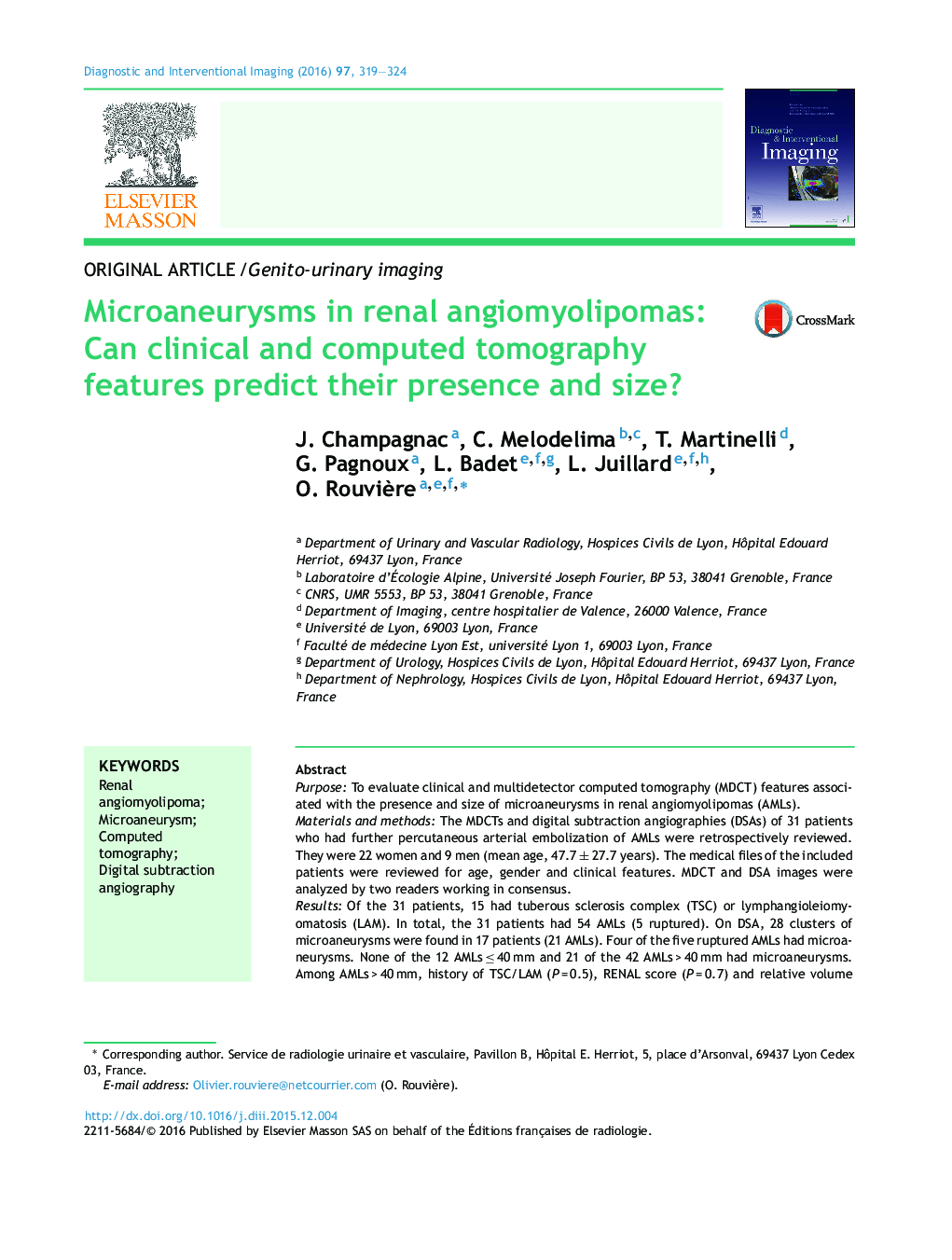| Article ID | Journal | Published Year | Pages | File Type |
|---|---|---|---|---|
| 2736765 | Diagnostic and Interventional Imaging | 2016 | 6 Pages |
PurposeTo evaluate clinical and multidetector computed tomography (MDCT) features associated with the presence and size of microaneurysms in renal angiomyolipomas (AMLs).Materials and methodsThe MDCTs and digital subtraction angiographies (DSAs) of 31 patients who had further percutaneous arterial embolization of AMLs were retrospectively reviewed. They were 22 women and 9 men (mean age, 47.7 ± 27.7 years). The medical files of the included patients were reviewed for age, gender and clinical features. MDCT and DSA images were analyzed by two readers working in consensus.ResultsOf the 31 patients, 15 had tuberous sclerosis complex (TSC) or lymphangioleiomyomatosis (LAM). In total, the 31 patients had 54 AMLs (5 ruptured). On DSA, 28 clusters of microaneurysms were found in 17 patients (21 AMLs). Four of the five ruptured AMLs had microaneurysms. None of the 12 AMLs ≤ 40 mm and 21 of the 42 AMLs > 40 mm had microaneurysms. Among AMLs > 40 mm, history of TSC/LAM (P = 0.5), RENAL score (P = 0.7) and relative volume of fat (P = 0.11) did not significantly predict the presence of microaneurysms. Microaneurysms were significantly larger in ruptured (9.5 ± 5.7 mm) than non-ruptured (3.9 ± 1.9 mm, P = 0.02) AMLs. No associations were found between the size of microaneurysms and the size of AMLs.ConclusionMicroaneurysms were found in no AML ≤ 40 mm and in 50%of AMLs > 40 mm. In AMLs > 40 mm, history of TSC/LAM, RENAL score and relative volume of fat did not significantly predict the presence of microaneurysms.
